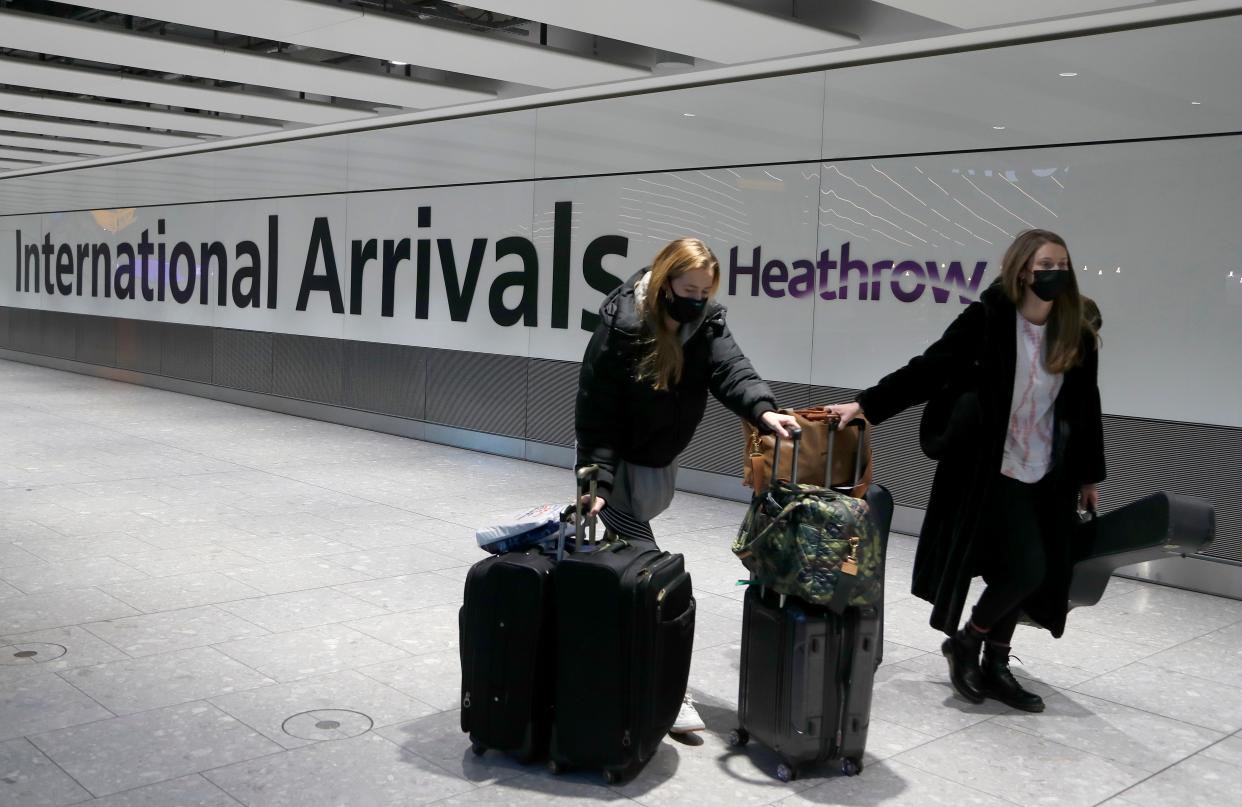Which countries are on the red list? Full list

From 17 May, international travel was given the official go-ahead in Britain by the Global Travel Taskforce, subject to a traffic light system.
The rules mean each country or region is classified as red, amber or green, with restrictions of varying severity to match. The government has also introduced a “green watchlist” to identify which countries are most at risk of moving from green to amber.
Follow UK travel list update - live: Latest news as France sheds ‘amber plus’
But which destinations are high risk and what are the rules? Here’s everything you need to know.
Which countries are on the red list?
The government has mandated hotel quarantine for Britons returning from high-risk or “red list” countries to stop new coronavirus infections and variants of concern entering the UK.
According to transport secretary Grant Shapps, red list countries are “those which should not be visited except in the most extreme of circumstances”.
Here’s the full list after the latest reshuffle of the traffic light travel lists on 4 August:
Afghanistan
Angola
Argentina
Bangladesh
Bolivia
Botswana
Brazil
Burundi
Cape Verde
Chile
Colombia
Costa Rica
Cuba
Democratic Republic of Congo
Dominican Republic
Ecuador
Egypt
Eritrea
Eswatini
Ethiopia
French Guiana
Georgia
Guyana
Haiti
Indonesia
Kenya
La Réunion
Lesotho
Malawi
Maldives
Mayotte
Mexico
Mongolia
Mozambique
Myanmar
Namibia
Nepal
Oman
Pakistan
Panama
Paraguay
Peru
Philippines
Rwanda
Seychelles
Sierra Leone
Somalia
South Africa
Sri Lanka
Sudan
Suriname
Tanzania
Trinidad and Tobago
Tunisia
Turkey
Uganda
Uruguay
Venezuela
Zambia
Zimbabwe
The list was originally 30 countries long when hotel quarantine first came into effect on 15 February. Additional countries have since been added, and the full list is now comprised of 60 destinations after four places were added and four were removed on 4 August, with changes coming into effect in England on 8 August at 4am.
The most recent additions were Georgia, Mexico, La Réunion and Mayotte, while India, Bahrain, Qatar and the UAE were moved up to the amber list.
What determines whether a country is high risk?
As the move to use quarantine hotels is primarily in response to new variants of concern of Covid-19, it’s likely that a country will be deemed “high risk” if one of the variants of concern has been identified and is prevalent there.
As well as the UK’s own Kent variant, named B.1.1.7, other mutations have been found in South Africa (1.351), Brazil (P.1) and India (B.1.617.2). This last, known as the Delta variant, is up to 60 per cent more transmissible than the Kent mutation and is already prevalent in the UK. The Beta variant has also been identified as a concern, with France previously put into its own special “amber plus” category in response to this mutation being detected there. The country was moved back to the amber list in the latest travel review.
Read more: Who pays for hotel quarantine and how long will it last?
According to the second Global Travel Taskforce report, published on 9 April, the key factors in assessing a country’s risk factor are its rate of infection, the prevalence of variants of concern and the progress of its vaccination programme. Reliability of data and genomic sequencing capability are also taken into account.
Where will high risk travellers stay and how will they get there?
A number of hotels have been contracted for the mandatory quarantine for all red list arrivals. Bath Road, which runs parallel to the runway at London Heathrow airport, has been dubbed “Isolation Row”.
Travellers are privately “escorted” to their quarantine hotel upon arrival.
Fines of up to £10,000 apply to arrivals who fails to undergo the stipulated hotel quarantine, while people who misrepresent their travel history on the passenger locator forms face up to 10 years in prison.
Travellers must finance the quarantine themselves, at a cost of £1,750 per person for those travelling alone, which includes 10 days' (11 nights') room and board. Additional people in the same hotel room pay significantly less. The second person pays only £650, with further discounts for children: £325 each. A family of four staying together pays £3,050.
The rates for hotel quarantine will be increasing to £2,285 for a single adult and £1,430 for a second adult from 12 August. The price remains unchanged at £325 for children aged 5-12 and free for children under 5.
How long is quarantine?
The current quarantine for all red list arrivals into the UK is 10 days and 11 nights.
What about all other arrivals?
Unvaccinated adult travellers from countries on the amber list need to self-isolate for 10 days at home and take two PCR tests on days two and eight of self-isolation, with the chance of early release in England if they pay for another test after five days.
For travellers returning from countries on the green list, there is no need to quarantine on return, but a pre-booked post-arrival PCR test will be needed. It must be taken on the day of arrival (“day zero”), the day after (”day one”) or the following day (“day two”).
Under 18s and travellers from the UK, US or EU who have received their second vaccine jab at least 14 days prior to departure can forgo quarantine when entering the UK from amber countries, instead following the same relaxed protocols as green list arrivals.
Read More
Which countries are on the amber list?
Which countries are on the green list?
‘Traffic light’ update – what the changes mean for international travellers

 Yahoo News
Yahoo News 
